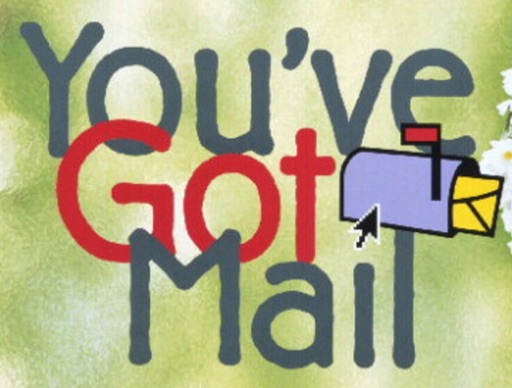THE PROBLEM
I receive an email. I open it and keep it in my Inbox for future reference. It’s mine, right?
Wrong.
A REAL-TIME EXAMPLE
Last Thursday, I opened Microsoft Outlook email. I use that account to collaborate with administrators in a school district where I advise an Open-Source Learning Academy program.
But instead of my Inbox, I was greeted with this:
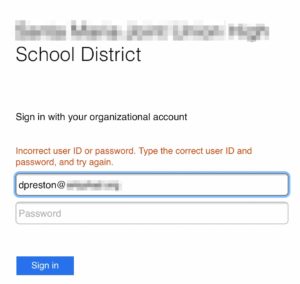
I tried other devices and other browsers. No luck. I was locked out.
I texted a friend in the school district’s IT department for help. He couldn’t figure it out. So I called and emailed another former colleague who now heads network operations for the school district:
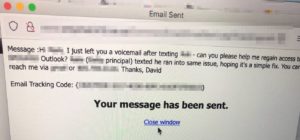
It took hours to solve the mystery. It turned out that someone in HR noticed I’m no longer a full-time teacher in the district and took me off the access list.
I was a teacher in that district for 15 years until this past October, when I agreed to become an independent consultant and run the Open-Source Learning Academy pilot program remotely. The day-to-day demands of my work – such as my need to send and receive email – didn’t change at all.
But HR didn’t pass that information along to network operations, and the person/s who control network and email access pulled the plug on me. It took seventeen texts, calls, and emails between eight different people, including a principal and two assistant superintendents, to restore my network and email access:
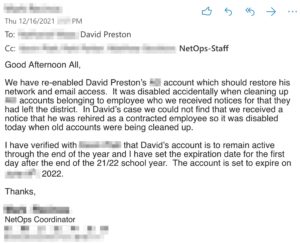
THE MORAL OF THE STORY
When someone else gives you an ID and grants you access to a system, they can also take it away.
It happens all the time. The same day someone locked me out of the network, a student texted me on a back channel:
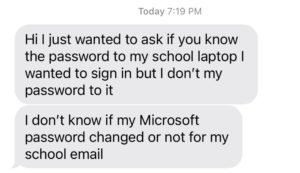
The first problem is the concept of assigning identification. There is a much larger philosophical issue here, but the bottom line is that I should get to say who I am, and you should get to say who you are, and no one should be able to declare either of us persona non grata. Identity is a right, not a privilege.
The second problem is a practical matter of data ownership and management. In order to be self-sufficient and thrive in digital environments, we must be able to preserve, share, and destroy our own data as we see fit. We should make informed choices about the information we share on others’ pipes, and we alone should determine the fate of the data we create.
THE SOLUTION
In the long run, we’re better off using an email client where we can control access to our data through the use of a sovereign identity.
This is why I partnered with technology architect (read: genius) Martin Dow to create the Open-Source Learning Academy Protocol (OSLAP). OSLAP has all the same features as Google Classroom or Microsoft 365. However, Martin built it with open source software that aligns with Open-Source Learning values and serves learners’ purposes. (Like not suddenly losing access to everything they write or read.)
Given the choice, students opted to declare their digital interdependence and wean themselves off Big Tech.
Contact Me to test drive OSLAP and own your ID and content.
